Onions, Potatoes, and Asparagus OH MY!
chrholme
7 years ago
Featured Answer
Sort by:Oldest
Comments (66)
Turbo Cat (7a)
7 years agoRelated Discussions
My Asparagus :)
Comments (14)Well, Landscraper you should get some sort of reward for the winters you have to live through. My parents were raised in Mott and Elgin. I have heard stories!! My uncle has said "The only thing slowing the wind coming out of Canada is a barbed wire fence" ;) The wind chills I hear about from my cousins still living in Mott and the surrounding area is just scary (-49). But, on the other hand, I am so envious of the beautiful, undisturbed, lush country in ND. When we visit in the summer, everything is green and growing. And pheasants everywhere! I am in Garden City, Kansas and as far as I know, it is way too dry to support wild asparagus around here. I have never heard of any in this area. We have lots of yukka plants and tumble weeds, corn, wheat, and cows-and not much else. Even our river bed has been dried up since I was a kid. And, like the rest of the country, it has only gotten worse the last couple years. Thank you so much for the thought! I may not get any asparagus this year, but, since I am a relatively new gardener, I am going to have plenty of other wonderful things from my garden that I have never grown before- like garlic, zucchini, napa cabbage, spinach...and many other old favorites. Lynn...See MoreOnions and potatoes
Comments (15)Zone 7, plant your potatoes directly in the garden and plant them about six to eight inches deep.For spring taters, start planting in Dec and Jan. In zone six, I'd plant them eight inches deep and pack them in leaf litter, too. Good success for spring potatoes for me (zone 7b) begins with planting a dozen or so in the middle or end of November and planting a dozen or so once every couple weeks through the first of Feb. The tops of the dozen earliest plantings have come up for me and are a bit frost burned, now, but otherwise looking healthy. (140 taters, total) Planted onion sets in early February (150 ea.) Planted a bit deeper than normal (close to four inches deep). Just now poking up a wee bit here and there. It worked for me last year. We had good results from the onions, and some tasty spring taters, too. The garlic was heavenly. Planting anything in any kind of pot/tray and leaving it outside, this time of year? Yeah, you're planning for failure. There's not enough soil to insulate your roots, sets, the cuttings, seeds, etc.. Interesting experiment, though - trying to figure ways to keep the pots and trays from freezing solid while leaving them outside day and night... Strawberries are planted in our garden, now, and looking healthy (40 ea.). Last year's asparagus seeds are growing like weeds (35 ea.). Rosemary is still green and healthy (one ea.). Basil doesn't like this weather at all. Snow peas look good (over 60 ea.). Garlic looks great (approx. 160 ea.). Early spinach is up and still healthy and has already been thinned. Lettuce is poking up, now. Plus the radishes are showing up, too. A little early on some of this, but you gotta take some chances...and experiment a little. I may have to replant some of the lettuce. I'll give them a couple more weeks before I replant. Yes, a week of sustained 24/7 freezing temps would just about wipe me out. But...we don't really get that around here this time of year. That means I can take some chances here and there. It also means that I get to grow veggies all year around and harvest them eight to ten months out of the year. Oh...I also save seeds from the garden. iow, I can afford to take some chances. ...lots and lots of seeds to play with....See MoreMy 'Oh, MY, Sweet Potatoes
Comments (5)I raise Beauregard which is a deep orange that I love. My crop this year didn't amount to much but I just planted 10 plants. They should be cured for a couple of weeks in high temps around 80 degrees. Normally that isn't too hard to do, but with these cold days, I may just bring mine inside to cure. Then store at around 50 degrees with high humidity of 80 to 85%. I store them in a room in the milk barn that has concrete floors and walls so the humidity is pretty high. I place them in single layers on newspapers in card board boxes to I can check them often. Loose papers on top. I turn a heater on the keep it from freezing. I like to save a couple of medium sized ones with no deformities and if I can from a hill that had the best production. I hope we can both save some over. I scrub and bake all the fingerlings for snacks. I love them, but DH won't touch them. I eat skin and all....See MoreOnions and potatoes
Comments (11)Charlotte, Congrats on your successful first full year of gardening and on your impending graduation from college. In the past, I know that some people found Dixondale onions at K & K Nursery on Sooner Road, but I am not sure if they still carry them. You can find seed potatoes just about anywhere at the right planting time for your area. I see them in places like Tractor Supply Company, Wal-Mart, Lowe's, Home Depot, and just about any and every nursery I venture into. Some Feed Stores/Farm Stores and even some garden nurseries sell the most common types out of bulk containers, selling them at a set price per pound. The big box stores tend to have them prepackaged in paper or plastic packaging. I am in southern OK and the potatoes usually hit the store shelves here any time between the week after Christmas and mid-January. It just depends on how long it takes the stores to clear out the holiday merchandise and start filling up the shelves with the first arriving gardening supplies. We don't plant that early here, but I like to buy them when the stores receive them so I can control the conditions they are exposed to while awaiting planting time. I'll try to remember to come back here and post when I start seeing seed potatoes in the stores here. Usually y'all start seeing them in central OK just a couple of weeks after I start seeing them down here. Garlic and onions will tolerate some shade, but they do better in full sun. There's lots of variables involved and not all onions behave the same way. I grow green onions (scallions) in a spot that gets afternoon shade and it isn't a problem since I am not trying to get them to bulb up. With regular onions, too much shade may give you smaller bulbs, but you'll still get onions. I haven't tried to deliberately grow garlic in shade,but sometimes taller plants nearby will shade my garlic some and I still get decently-sized cloves, though they sometimes are smaller than the ones grown in full sun. It kinda varies depending on how much shade they are getting and what the weather conditions are like in a given year. Y'all, I am not sure if SeedMama will be coordinating the group order for Dixondale as she has in the past. The last time I heard from her, she was starting a new job that was going to be very demanding, time-wise. Maybe Paula knows. Paula? Are you here? If SeedMama is too busy, maybe another one of you there in central OK could take on that task? You really do get a terrific price break when you place a large order with Dixondale. Mike, We are still eating on this year's crop too. I planted too many last year and need to plant fewer this year so I may switch to their Short-day and Intermediate-Day samplers so we still can have a nice variety of onions without planting a bundle of each kind they sell for our climate. We can only eat so many onions in a given year, no matter how yummy they are. I've been ordering Dixondale onions via the internet since 2007, and before that I could occasionally (though not consistently every year) find them at stores in Texas. I am so spoiled by their freshness and great quality that I don't think I'll ever plant onions from anyone but Dixondale. My onion-planting date is mid-February and some years I request an even earlier shipping date so I can get them in the ground earlier than usual if the weather is on the warm side. It doesn't seem like 2014 will be one of those "weather on the warm side" winters unless our weather pattern changes pretty drastically, but tomorrow I'm going to clean out the raised bed where I'll be planting onions this year so it is ready early just in case. Tomorrow's my last day to get some work done outdoors before the weather turns colder again and slaps some sense into all of us who are thinking thoughts of spring planting and such. I've spent a couple of hours a day outside in the garden this week and it was mostly wonderful, except when I found a tiny (3/8" long) grasshopper sitting there beside me. I have no idea why he hasn't frozen to death on these cold nights. It isn't often we still have grasshoppers out and about in December. Dawn...See MoreOkiedawn OK Zone 7
7 years agochickencoupe
7 years agoOkiedawn OK Zone 7
7 years agoluvncannin
7 years agoOkiedawn OK Zone 7
7 years agoAmyinOwasso/zone 6b
7 years agoOkiedawn OK Zone 7
7 years agoAmyinOwasso/zone 6b
7 years agoOkiedawn OK Zone 7
7 years agoluvncannin
7 years agoOkiedawn OK Zone 7
7 years agoluvncannin
7 years agoluvncannin
7 years agochickencoupe
7 years agoOkiedawn OK Zone 7
7 years agoluvncannin
7 years agoluvncannin
7 years agoOkiedawn OK Zone 7
7 years agochrholme
7 years agoOkiedawn OK Zone 7
7 years agoluvncannin
7 years agoOkiedawn OK Zone 7
7 years agofitzjennings
7 years agochrholme
7 years agohazelinok
7 years agochrholme
7 years agochickencoupe
7 years agoAmyinOwasso/zone 6b
7 years agoOkiedawn OK Zone 7
7 years agochrholme
7 years agoAmyinOwasso/zone 6b
7 years agoOkiedawn OK Zone 7
7 years agoluvncannin
7 years agochrholme
7 years agolast modified: 7 years agoluvncannin
7 years agochrholme
7 years agoluvncannin
7 years agoOkiedawn OK Zone 7
7 years agochrholme
7 years agochrholme
6 years ago
Related Stories
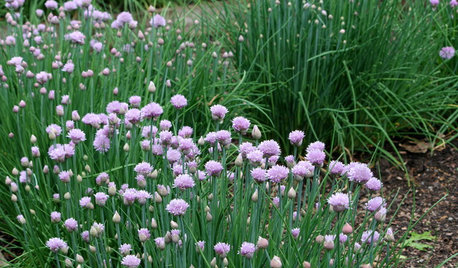
HERBSHerb Garden Essentials: How to Grow Chives
This decorative and delicately flavored herb from the onion family is easy to grow indoors and out
Full Story
GARDENING GUIDES11 Favorite Edibles for Your Cool-Season Garden
Plant crunchy carrots, crisp radishes, tender peas and other vegetables for fall and spring harvests
Full Story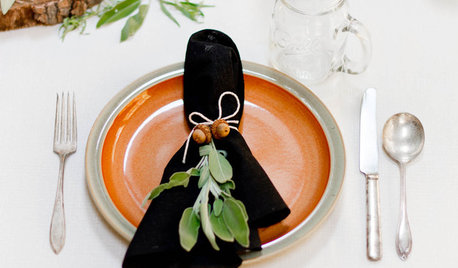

HOUZZ TOURSMy Houzz: History Resonates in a New Washington Farmhouse
Sentimental memorabilia join reclaimed pieces to create a warmly personal home for a family
Full Story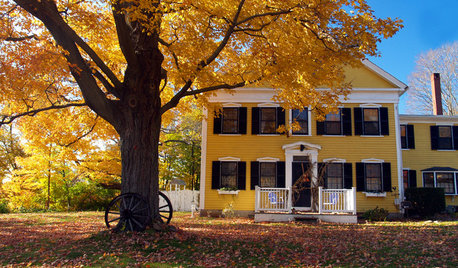
LIFETo-Dos: Your October Home Checklist
It’s a great time to clean your gutters, swap out seasonal clothes and wallow in favorite fall traditions. What’s on your October list?
Full Story
FARM YOUR YARD6 Things to Know Before You Start Growing Your Own Food
It takes time and practice, but growing edibles in the suburbs or city is possible with smart prep and patience
Full Story
GARDENING GUIDES10 Easy Edibles for First-Time Gardeners
Focus on these beginner-friendly vegetables, herbs, beans and salad greens to start a home farm with little fuss
Full Story
PETSHouzz Pets Survey: Who Rules the House — Dogs or Cats?
New data shows that pets make people happy, and pet owners love spending big to return the favor
Full Story
EDIBLE GARDENSHouzz Call: What Did You Grow This Summer?
Let’s celebrate the homegrown fruits and vegetables of the season. Post your pictures and tell us about your harvest
Full Story
FARM YOUR YARDHouzz Call: Home Farmers, Show Us Your Edible Gardens
We want to see where your tomatoes, summer squashes and beautiful berries are growing this summer
Full StorySponsored




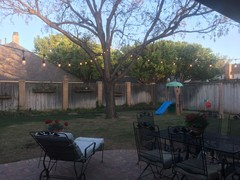
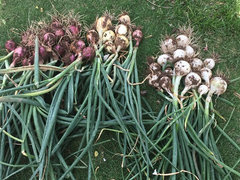
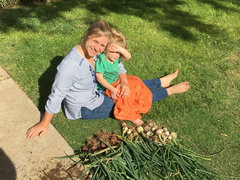
Okiedawn OK Zone 7